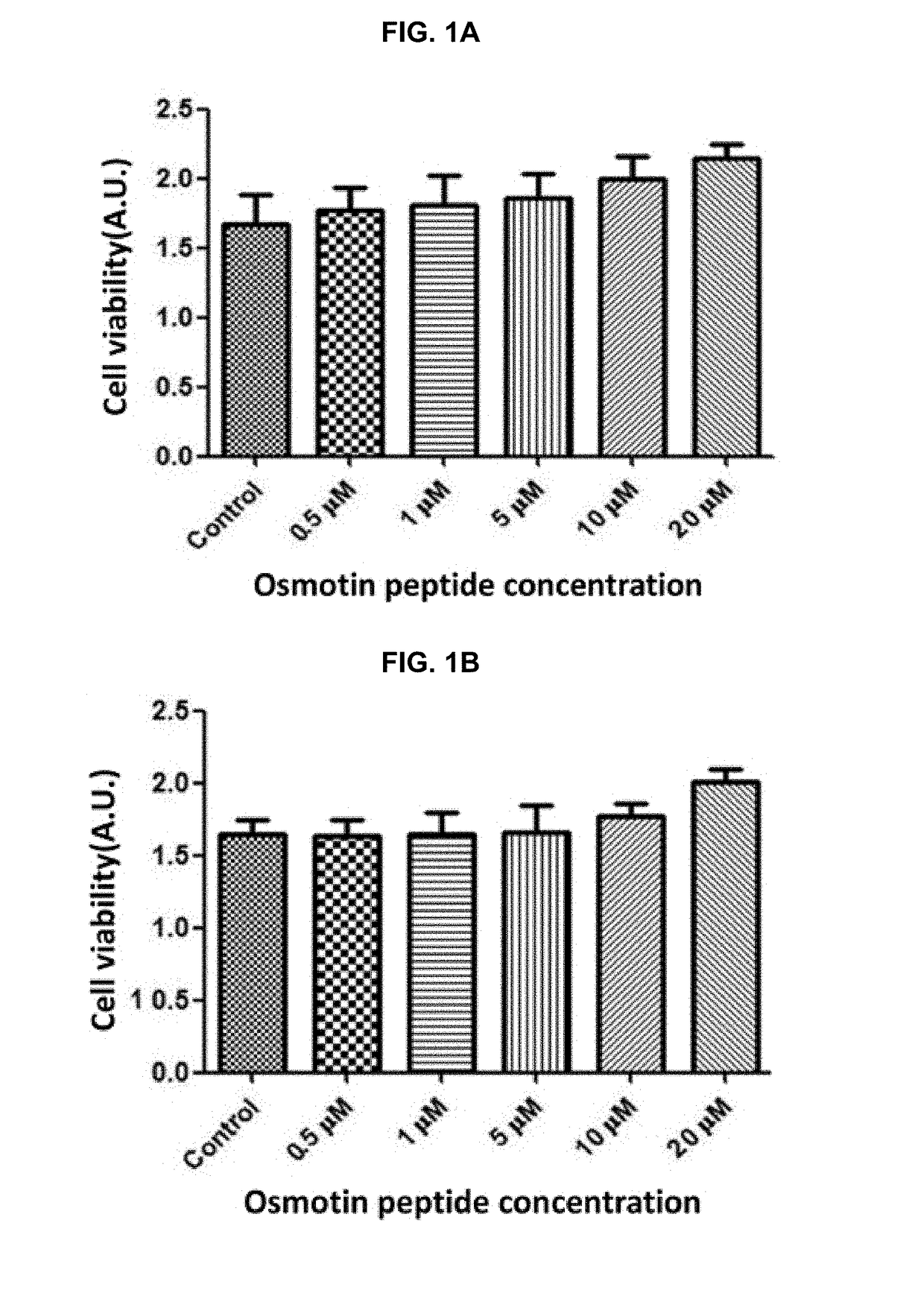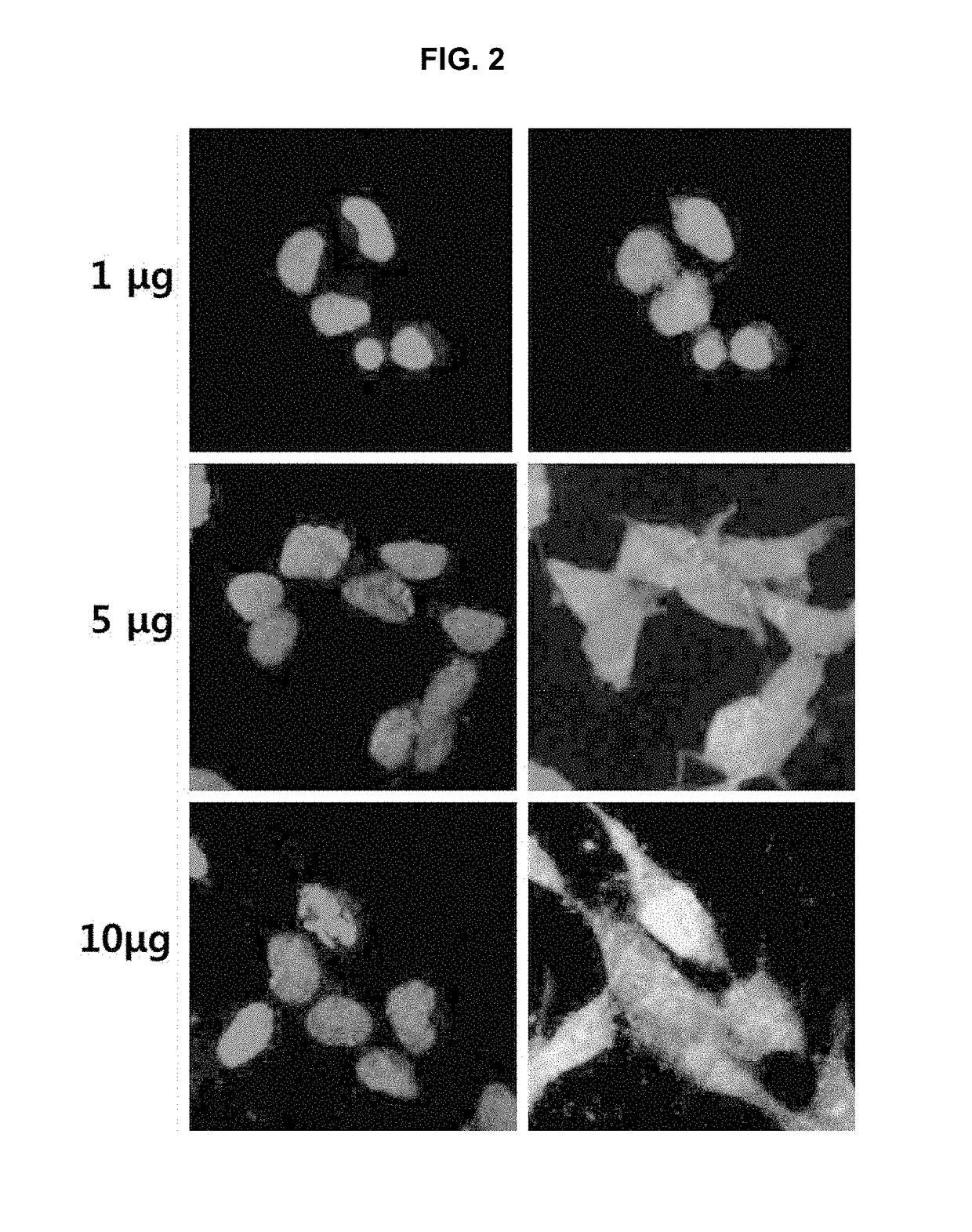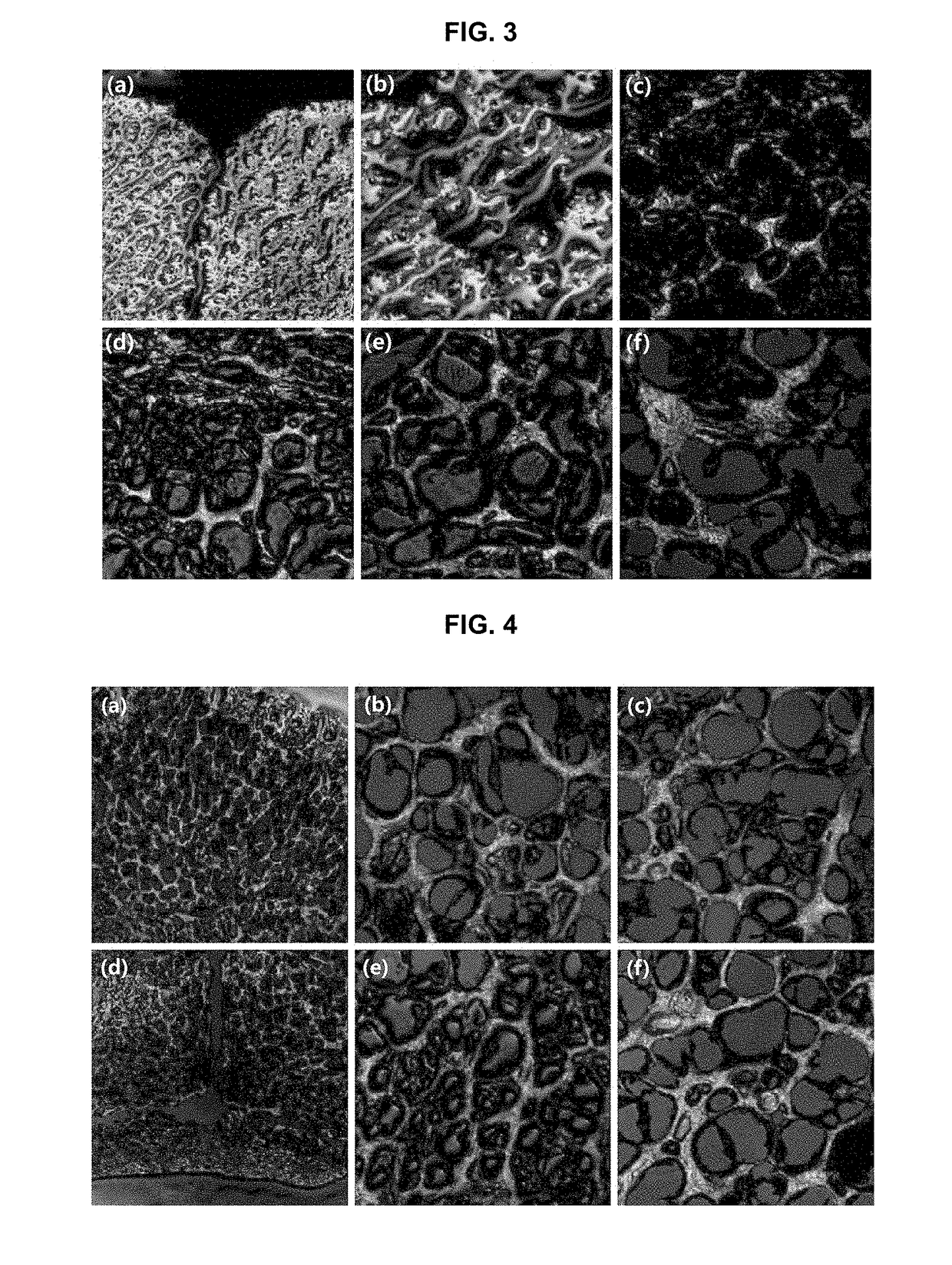Composition for preventing, ameliorating, or treating neurological disease containing osmotin peptide as active ingredient
a technology of osmotin and active ingredients, which is applied in the direction of peptide/protein ingredients, drug compositions, nervous disorders, etc., can solve the problems of difficult to accurately diagnose disease, alzheimer's disease, dysfunction and death of neurons, etc., and achieves high industrial availability and high productivity through protein synthesis
- Summary
- Abstract
- Description
- Claims
- Application Information
AI Technical Summary
Benefits of technology
Problems solved by technology
Method used
Image
Examples
example 1
f Human Neuroblast Line SH-SY5Y Cells
[0044]Human neuroblast line SH-SY5Y cells were cultured in 100 μl of dulbecco modified eagle medium (DMEM) supplemented with 10% (v / v) fetal bovine serum (FBS) and 1% (w / v) antibiotic (penicillin-streptomycin) at 37° C. and under the condition of 5% CO2.
example 2
o™ Triplex Assay
[0045]Cells were seeded in a 96-well plate containing growth medium (DMEM medium containing 10% FBS, 100 units / ml penicillin, and 100 mg / ml streptomycin) in such a way that 100 μl of the culture was seeded in every cell at the population of 2×104 cells, and cultured under the condition of 5% CO2 at 37° C. When cells were about 70-90% confluent, they were transformed with pCAX-APP Swe / Ind for 8 hours by using Lipofectamine 3000 according to the manufacturers instructions. Then, the medium was removed by suction and replaced with fresh 100 μl of growth medium containing 0.5 to 20 μM osmotin-peptide. The cells in the fresh medium were incubated for 24 hours.
[0046]After 24 hours, ApoTox-Glo™ Triplex assay using Glomax-Multi Detection system was performed according to the manufacturer's instructions to confirm cell viability, cytotoxicity assay, and caspase-3 activity.
[0047]As a result, as shown in FIGS. 1A and 1B, it is seen that the cell viability was increased in propo...
example 3 morphological
Analysis Using Immunofluorescence In Vitro
[0048]For morphological analysis, human neuroblast line SH-SY5Y cells were seeded at 2×104 cells / well in a 96-well plate and treated with osmotin peptide at concentrations of (1, 5 and 10 μg). The cells were cultured at a temperature of 37° C. under the condition of 5% CO2 while a medium (DMEM medium containing 10% FBS, 100 Units / ml of penicillin and 100 mg / ml of streptomycin) was changed at regular intervals 7 times a day.
[0049]When the cells were 70 to 90% confluent, the medium was exchanged with fresh medium containing FITC-tagged osmotin-peptide (1, 5 and 10 μg) and further cultured for 24 hours. The cells were washed with PBS buffer and fixed with 4% (v / v) paraformaldehyde for 30 minutes at room temperature. After removing the 4% (v / v) paraformaldehyde, the cells were washed with PBS buffer for 5 minutes and infiltrated with 0.1% (v / v) Triton X-100 at room temperature for 15 minutes. Then, the cells were treated with a 1% BSA blocking s...
PUM
| Property | Measurement | Unit |
|---|---|---|
| temperature | aaaaa | aaaaa |
| v/v | aaaaa | aaaaa |
| v/v | aaaaa | aaaaa |
Abstract
Description
Claims
Application Information
 Login to View More
Login to View More - R&D
- Intellectual Property
- Life Sciences
- Materials
- Tech Scout
- Unparalleled Data Quality
- Higher Quality Content
- 60% Fewer Hallucinations
Browse by: Latest US Patents, China's latest patents, Technical Efficacy Thesaurus, Application Domain, Technology Topic, Popular Technical Reports.
© 2025 PatSnap. All rights reserved.Legal|Privacy policy|Modern Slavery Act Transparency Statement|Sitemap|About US| Contact US: help@patsnap.com



